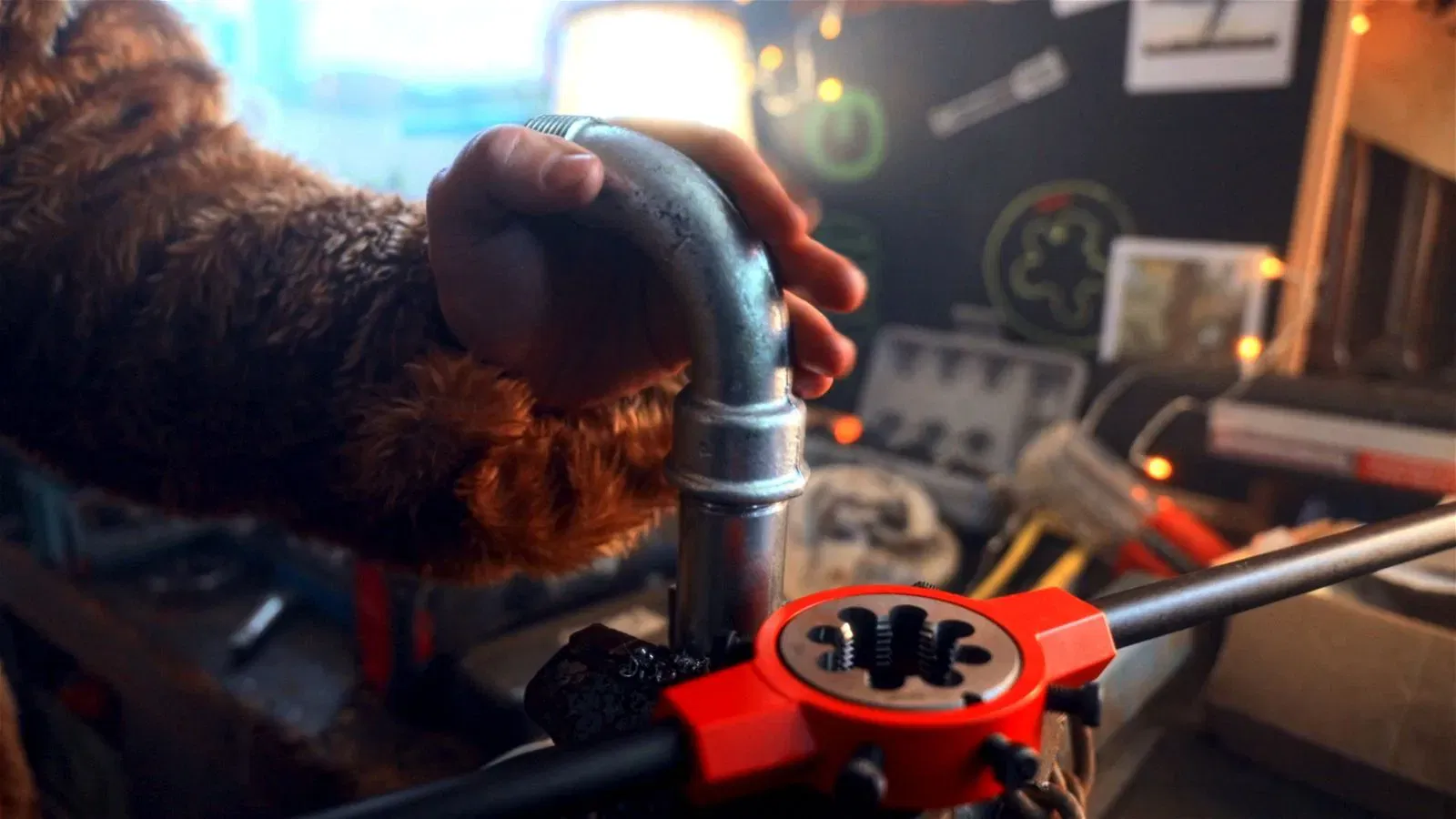
Pipe thread types - Whitworth thread & more
What would Joseph Whitworth say if he knew that over 130 years after his death, every European gas and water installer still recognized his name? This British engineer is known as the father of thread standardization and introduced the inch-thread named after him in 1841. While metric thread standards have been widely adopted in Europe for general use, the Whitworth thread has resiliently maintained its dominance in one specific area. It is still used as a pipe thread and is not going away anytime soon. A perfect reason to take a closer look at this venerable member of the thread standards!
Characteristics of the Whitworth Thread
The cylindrical Whitworth thread is the standard for pipe threads, also sold under the name "British Standard Pipe." Its abbreviation is G or BSP, combined with the nominal size. The pitch is defined in threads per inch, resembling a fine thread's characteristics. The Whitworth thread's flank angle is 55°.
There is also a tapered Whitworth thread for pipe connections, designated as R or BSPT, combined with a cylindrical Rp thread. We will delve deeper into these different pipe thread types in the next section.
Firstly, let's see where this thread is used. Essentially, it's everywhere where pipes and the so-called fittings, which establish connections, are employed. A classic example is sanitary and heating technology, where the pipe thread is indispensable. So, if you ever wondered about the thread type of your screw tap, now you know. It's also used in pneumatics and hydraulics, especially for valves or connecting pipes and hoses. Even heating and cooling systems often rely on the Whitworth thread.

Different Pipe Thread Types
It's hardly surprising that sealing is paramount in pipe connections. While granular materials are sometimes transported in pipes, the primary function is for liquids and gases. An incorrect seal can range from being a mere annoyance to potentially lethal.
Therefore, different pipe thread types and standards are categorized into "sealing" and "non-sealing." In this context, the Whitworth thread also differentiates between cylindrical and tapered.
Here are two pipe thread types you should be familiar with:
- Pipe thread DIN EN ISO 228-1: for non-sealing connections with cylindrical internal and external threads.
- Pipe thread DIN EN 10226-1: seals within the thread using a cylindrical internal thread and a tapered external thread.
The non-sealing variant, or the Whitworth thread G, is more commonly used. To establish a tight connection, the installer must either press two sealing surfaces outside the thread or insert a seal into the thread. Traditionally, sealing hemp combined with a sealant paste is used, or other sealing elements like O-rings or flat sealing rings are employed.
The sealing pipe thread DIN EN 10226-1, on the other hand, creates a metallic seal. This is achieved by pairing cylindrical and tapered threads. When tightened, the threads jam together, creating a seal. Still, additional sealing agents can be used for added security. Usually, the internal thread is cylindrical (designated as Rp), and the external thread is tapered (designated as R). On rare occasions, a tapered internal thread is used, which is designated as Rc.
The Inch Issue with the Whitworth Thread
If you already find thread standards and their specific dimensions confusing, brace yourself. The Whitworth thread adds an extra layer of complexity. Although its size is denoted in inches, it doesn't correspond to the external diameter. This peculiarity arises from advancements in sanitary and heating technology over the past 150 years. Initially, pipe measurements referred to the vital internal diameter. So, historically, a "1 inch pipe" genuinely had an internal diameter of 1 inch (or 25.4 mm). The external diameter of historical pipes was considerably large by today's standards, around 33 mm for a 1 inch pipe. As manufacturing methods improved, reducing wall thickness, the internal diameter was expanded for practical reasons – many tools and components were sized based on the external diameter. Therefore, a "1 inch pipe" today doesn't have a diameter that's truly 1 inch. It's more of a designation than an actual measurement, and the same applies to the Whitworth thread.
Beyond Whitworth: Pipe Thread Types and Standards in the USA
While the Whitworth thread is widely used across Europe, and will remain the primary pipe thread standard you'll encounter unless you emigrate, it's always enlightening to see what's used elsewhere.
American National Standard Pipe Thread Norms govern pipe threads' specifications in the USA. The standard variant, NPT (American tapered pipe thread), is suitable for most applications without sealing agents and has a flank angle of 60°. Numerous NPT variants cater to specific applications or increased loads. The National Pipe Taper Fuel NPTF (American tapered pipe thread) is suitable for challenging connections, especially in fuel transport. The National Pipe Straight Mechanical (NPSM) is a cylindrical variant of the American pipe thread, mainly found in iron, steel, and brass pipes that aren't pressurized. Another cylindrical version, the National Pipe Straight Loose (NPSL) thread, is for connections with some play.
Although the range of options might be tempting, American thread standards are not compatible with the British Whitworth thread. They not only have different flank angles but also varying pitches. It's always worth double-checking the thread standard before starting any project!
Find pipe thread cutting tools for Whitworth threads and other pipe thread standards at BAER's online shop. Our friendly customer service will gladly answer all your questions about pipe thread types.
